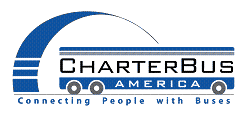Glossary: Software Development Life Cycle
In general, custom software development life cycle (SDLC) methodology follows the following steps:
Proposed software is defined and a software requirements document is created. If existing software is to be replaced, the existing software is evaluated and software and processing deficiencies are identified. This can be done by interviewing users of the software and consulting with software support personnel. The results of the existing software evaluation are then added to the new software application requirements. In particular, the new software design must address the functional requirements and any deficiencies in the existing software application, with specific proposals for improvement of the software functionality. The software design document is completed and plans are laid out concerning the physical construction, hardware, operating systems, programming, communications, and security issues (the software development plan).
The custom software is developed in accordance with the software development plan. The new components and custom programs are tested and installed. Business software users must be trained in its use, and all aspects of specifics and performance must be tested and verified. If necessary, software modifications, adjustments or enhancements should be made at this stage. The custom business software application is put into use. This can be done in various ways. The new system can phased in, according to application or location, and the old software gradually replaced. In some cases, it may be more cost-effective to shut down the old system and implement the new software all at once. This decision can also be influenced by any special interface or software integration requirements. Users of the software should be kept up-to-date concerning the latest software modifications and procedural changes.




